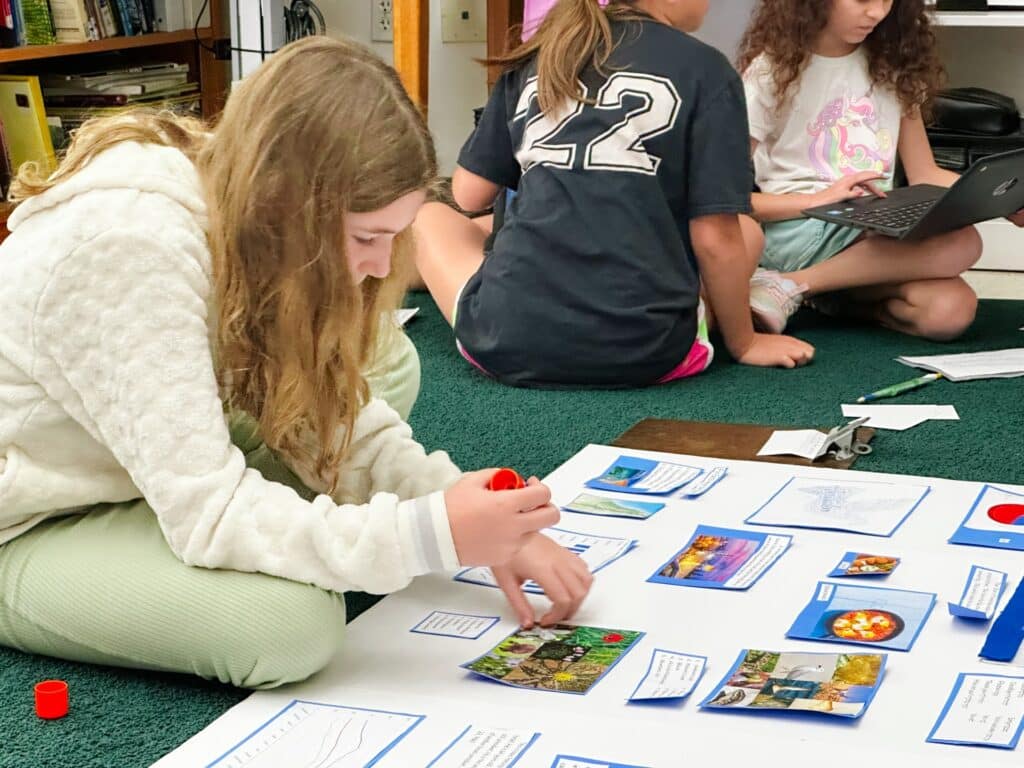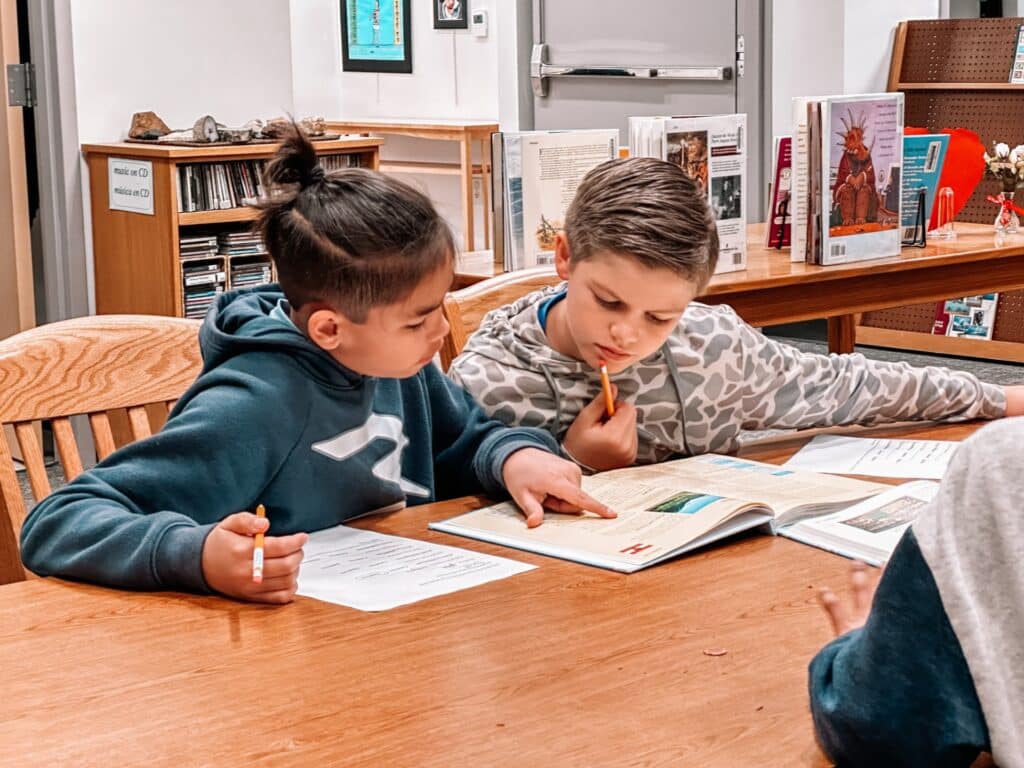Elementary
MSSA Elementary Program
The Montessori School of San Antonio’s Elementary program encompasses six years. Lower Elementary consists of first through third-level students, and Upper Elementary consists of fourth through sixth-level students. Children spend a three-year cycle in the same classroom with two instructors during the Montessori elementary years. The course of study is designed to motivate children to learn through action, exploration, and discovery.
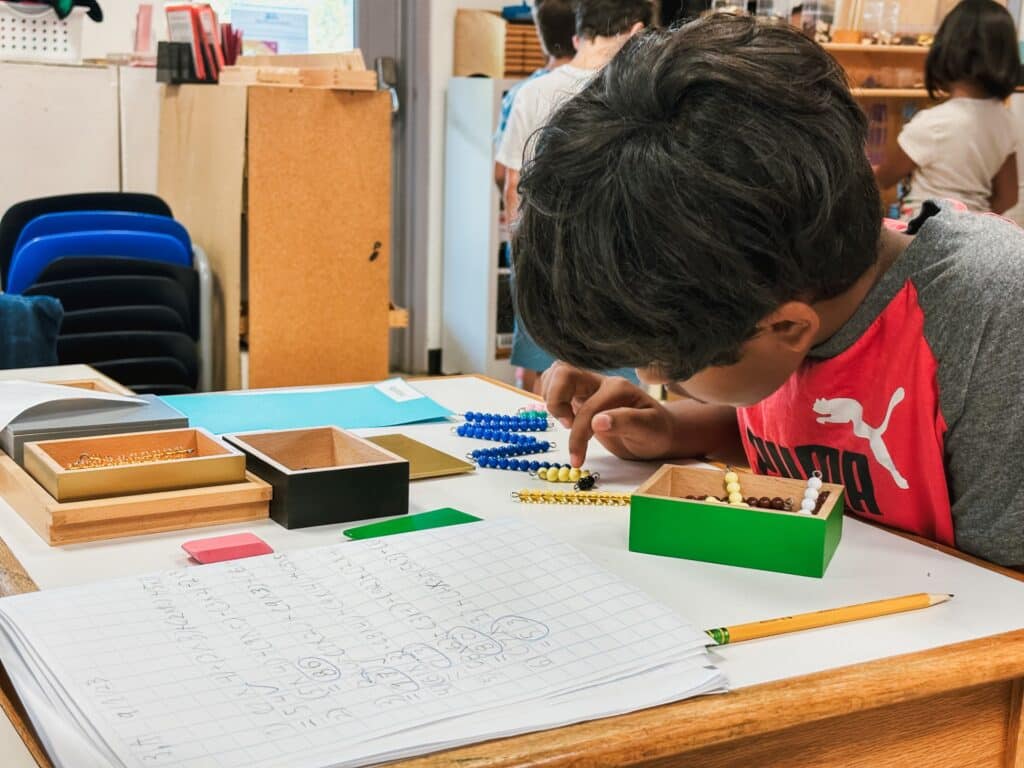

MSSA nurtures responsibility and time management – working with a planner each week helps our children understand their responsibilities and track their own progress in each subject.”
- Lower and Upper Elementary Parent
How Montessori Elementary Programs Work
The learning environment and curriculum are intricately linked to the child’s intense intellectual curiosity and sensitivity to dynamic social relationships. Each classroom is designed and prepared with appropriate didactic materials to engage the child. Meanwhile, students progress at their own pace through increasingly complex stages toward defined goals. Experienced and committed teachers and assistants create a student-centered environment that values each child. Elementary students attend Library, Music, Spanish, Art, and Physical Education weekly.
Lower Elementary Ages 6 to 9 Years
Learning activities in Lower Elementary reflect the child’s sensitive periods for critical growth in specific cognitive areas. Lower Elementary children acquire academic skills in addition to the development of personal and social conscience. Socially, children become more peer-oriented, and intellectually, children show an increased capacity for abstraction and use of imagination.
Their intellect is greatly empowered by a remarkable imagination that is in a constant state of integrating knowledge into an ever-expanding mental framework. The Elementary child takes a serious interest in maintaining positive peer relationships, which involves understanding cultural diversity, accommodating different perspectives, and scrutinizing different moral codes and systems of justice.
Lower Elementary Growth Focus Areas
- Academic and Personal Evolution
- Expanding Imagination
- Maturing Peer Relationships
- Intellectual Curiosity and Sensitivity
Lower Elementary Curriculum
The Lower Elementary classroom is carefully designed and prepared with appropriate materials that engage children in spontaneous activities of learning. The environment is organized into the following academic areas: mathematics, geometry, language arts, grammar, physical science, history, geography, botany, zoology, and technology. Students are encouraged to pursue their natural curiosity in a welcoming and nurturing setting. Lessons are given individually or in small groups. Children are encouraged to repeat lessons frequently as repetition leads to the attainment of skills. As the teacher observes and guides students in their work, children are motivated and supported to reach personal levels of skill mastery in each of the academic areas. Social and practical skills introduced in Primary continue to be developed through teacher modeling and student interactions. Older children provide the example of appropriate classroom behaviors, as well as the attention of a mentor for the younger children. In this manner the community of children is built and strengthened on mutual respect for others, liberty to move at will, and freedom to make wise choices of work.
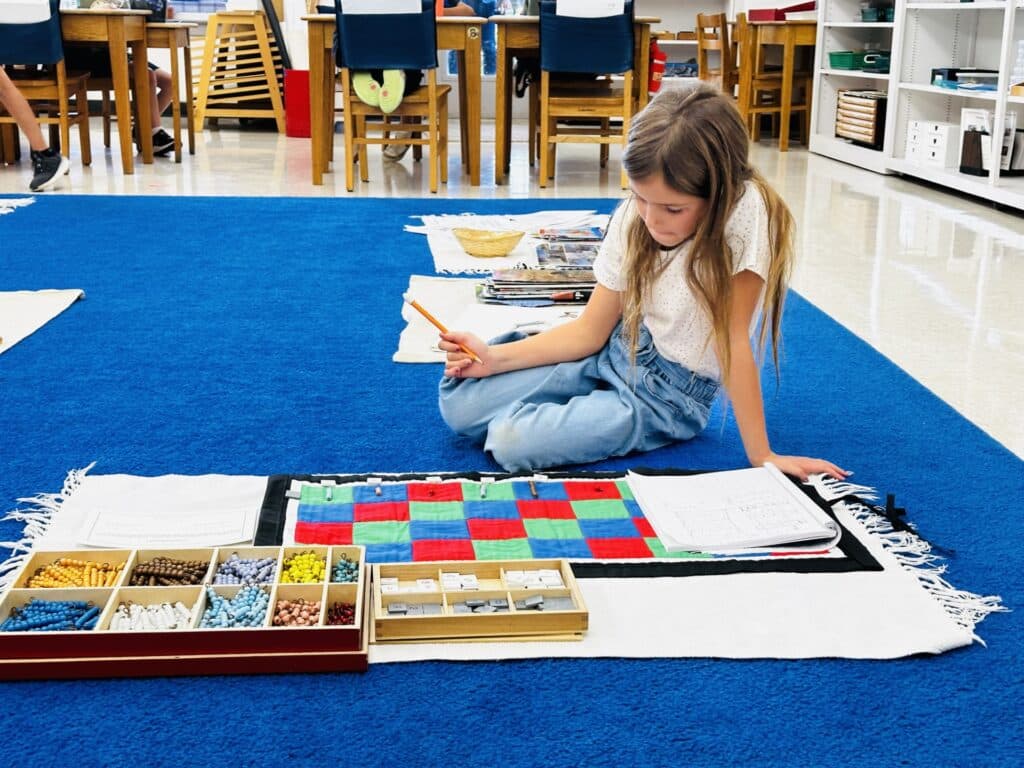
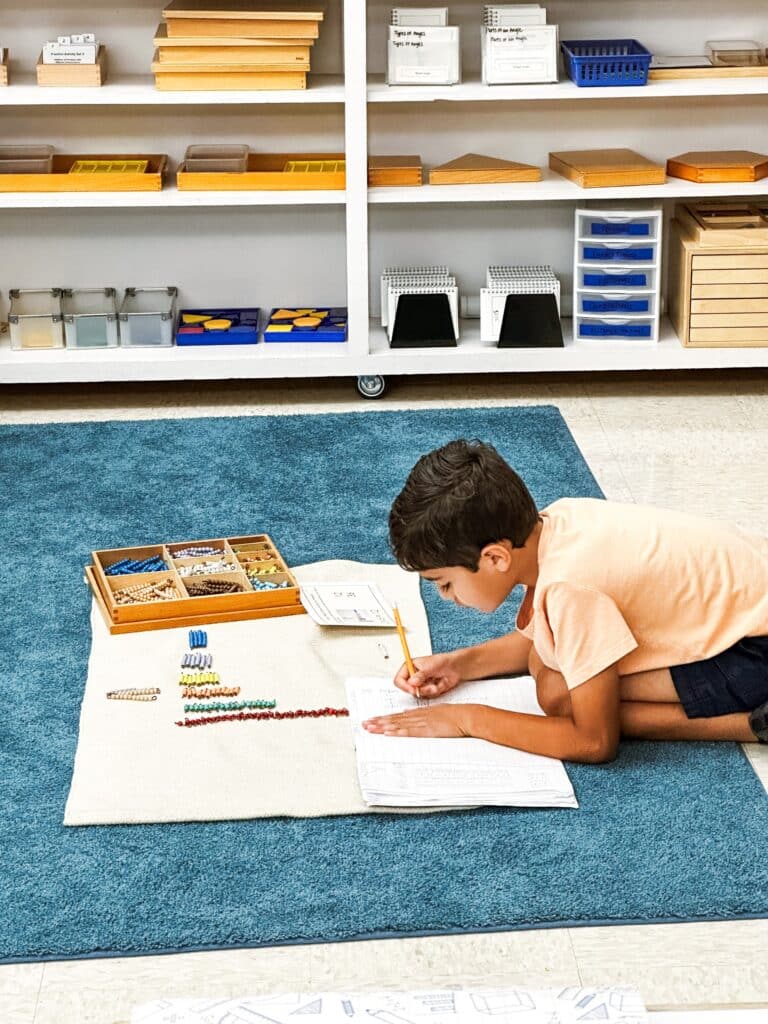
Tucked away in a naturally wooded campus, the serene atmosphere is an oasis of engaged students experiencing joyful learning every day.”
- Lower Elementary Parent
Upper Elementary Ages 9 to 12 Years
Children in Upper Elementary cross the bridge between learning by hands-on experiences and the abstract understanding of concepts. With a strong foundation in basic skills and a broad cultural overview, Upper Elementary students inquire more deeply into academic studies. They engage in more complicated work integrating a variety of skills, and as their abilities expand, so does their learning environment, as students participate in overnight outings, field trips, and cultural exhibitions.
Upper Elementary is a time when children’s cognitive activities and mental operations become time-efficient, precise, and flexible in accommodating a wide variety of academic and social challenges. Self-expression, particularly among peers, becomes a priority. Upper Elementary children enjoy expressing personal opinions and perspectives and discussing those of their peer group. Tremendous effort is required by children to develop and use the appropriate vocabulary, grammatical structures, thinking strategies, and behaviors that are specific to the demands of particular situations. Grace and courtesy take on more importance than ever in the Upper Elementary years as children mature into adolescence.
Upper Elementary Growth Focus Areas
- Sophisticated Cognitive Abilities
- Personal Expression
- Socially Conscious Communication
- Exploration of a Larger Environment
Upper Elementary Curriculum
In the Upper Elementary program, students inquire more deeply into advanced mathematics, literature, writing, geography, world history, science, and technology while basic skills and cultural studies continue to be emphasized. Students engage in major projects over extended durations that involve the integration of multiple academic subjects and various skills. Students are guided to achieve levels of academic competency in individualized curriculums while developing the social skills necessary to contribute meaningfully as members of the classroom community. There is a strong inclination for Upper Elementary children to work more in the abstract rather than the physical. However, when students encounter challenges that require them to clarify key concepts, they can refer to familiar Montessori materials in the classroom. As children mature emotionally, moral issues become increasingly important. Children in Upper Elementary begin to develop an understanding of the relationships that exist between individuality, culture, and assimilation into a broader community.
